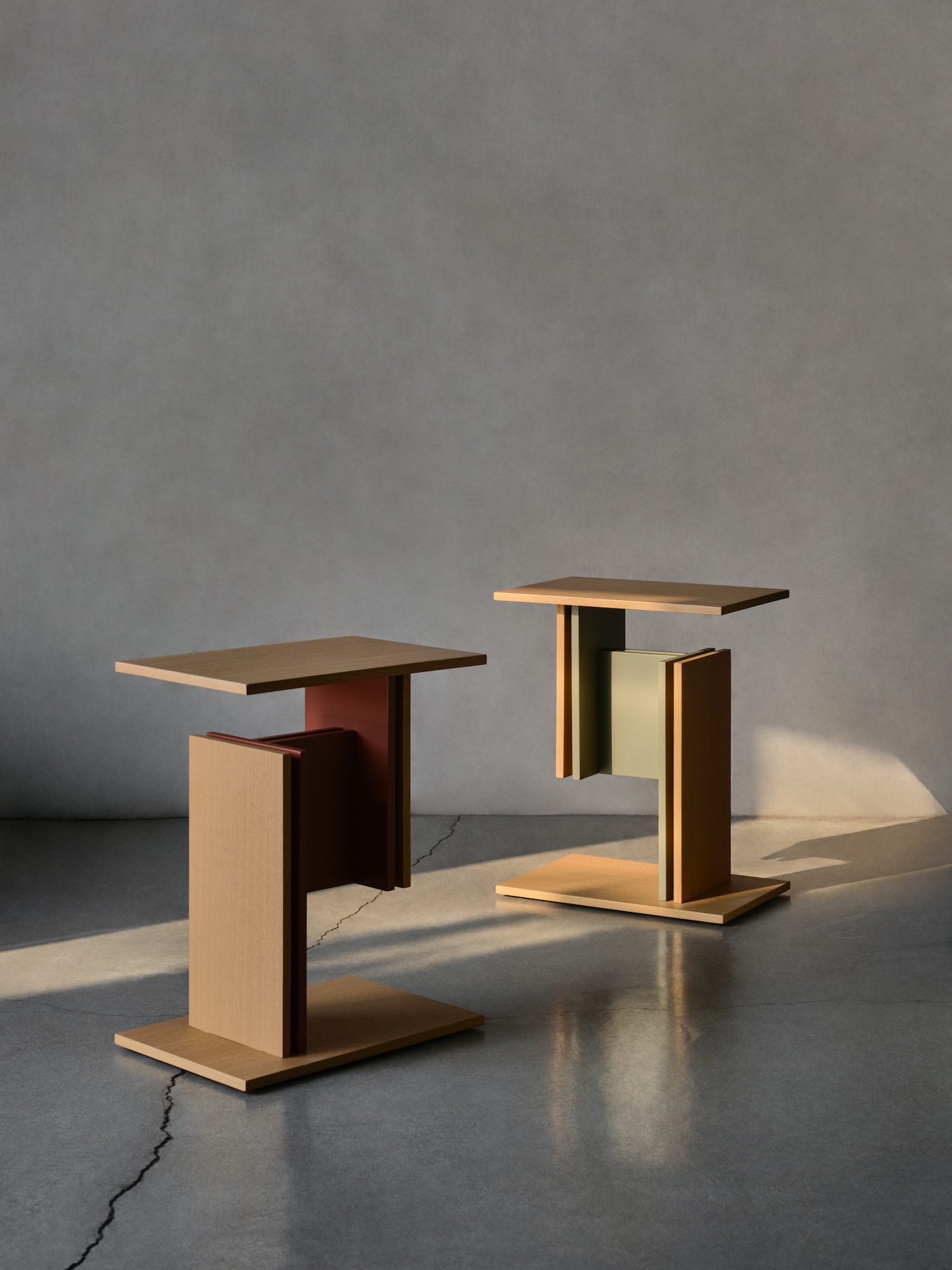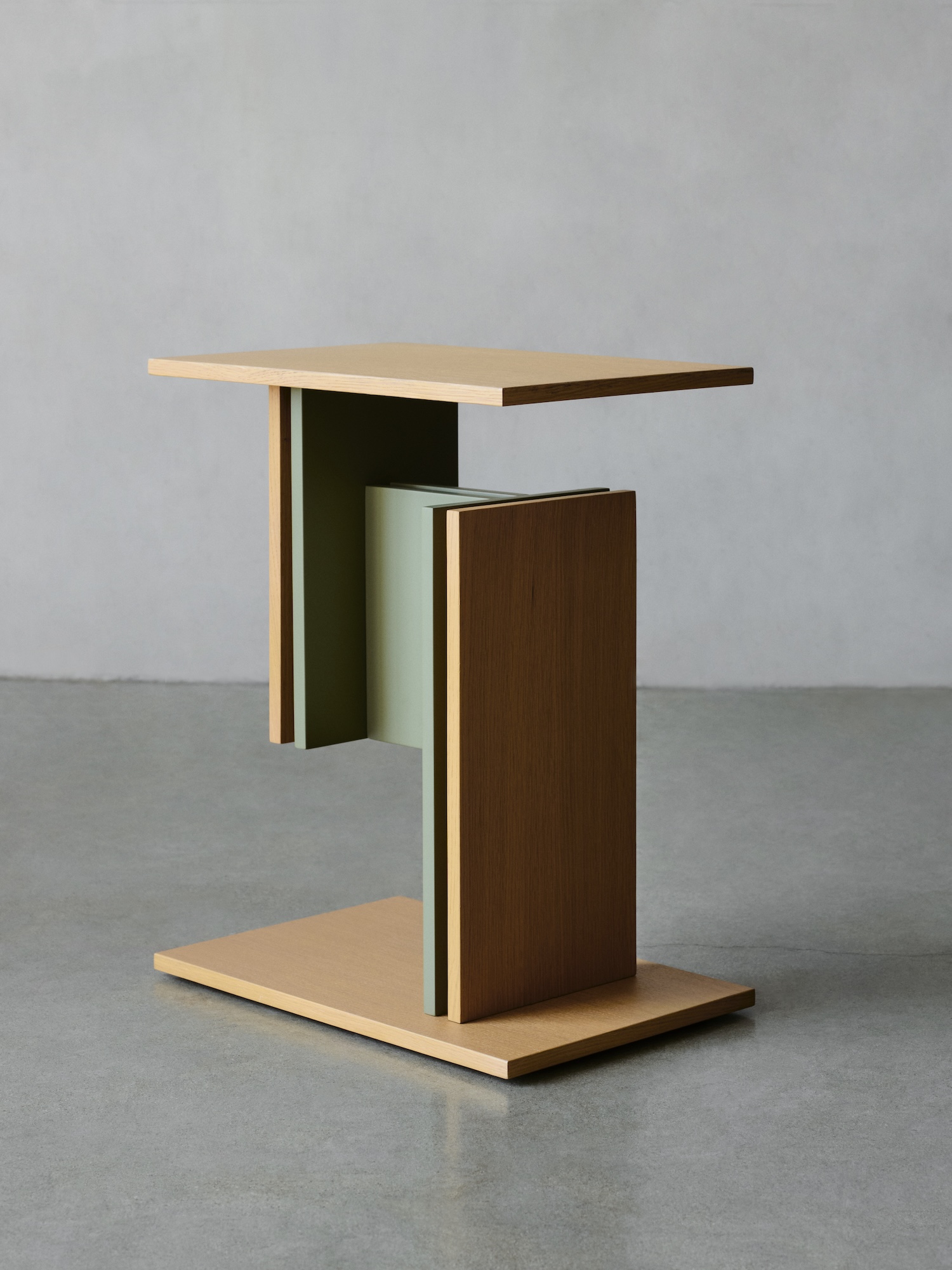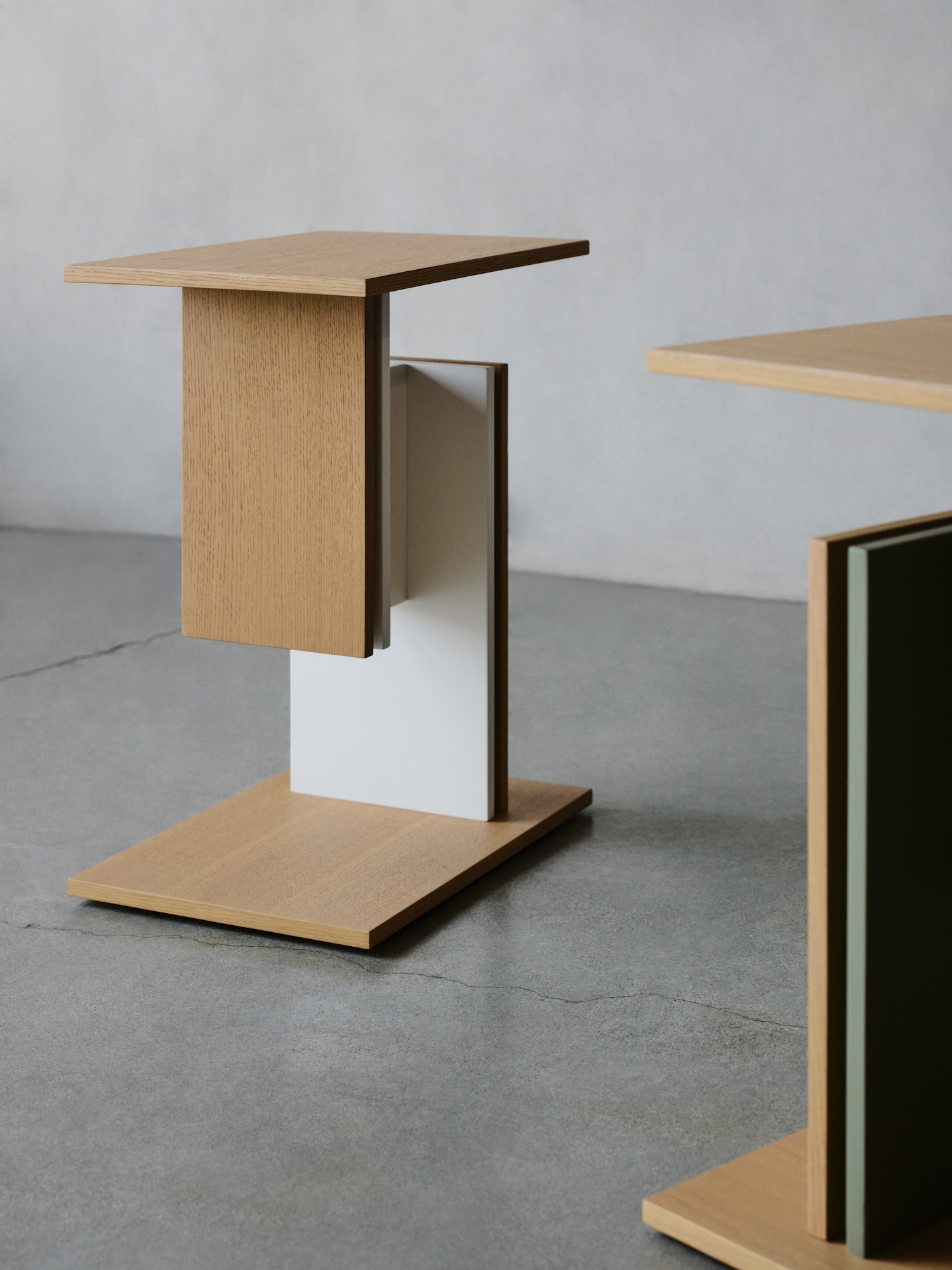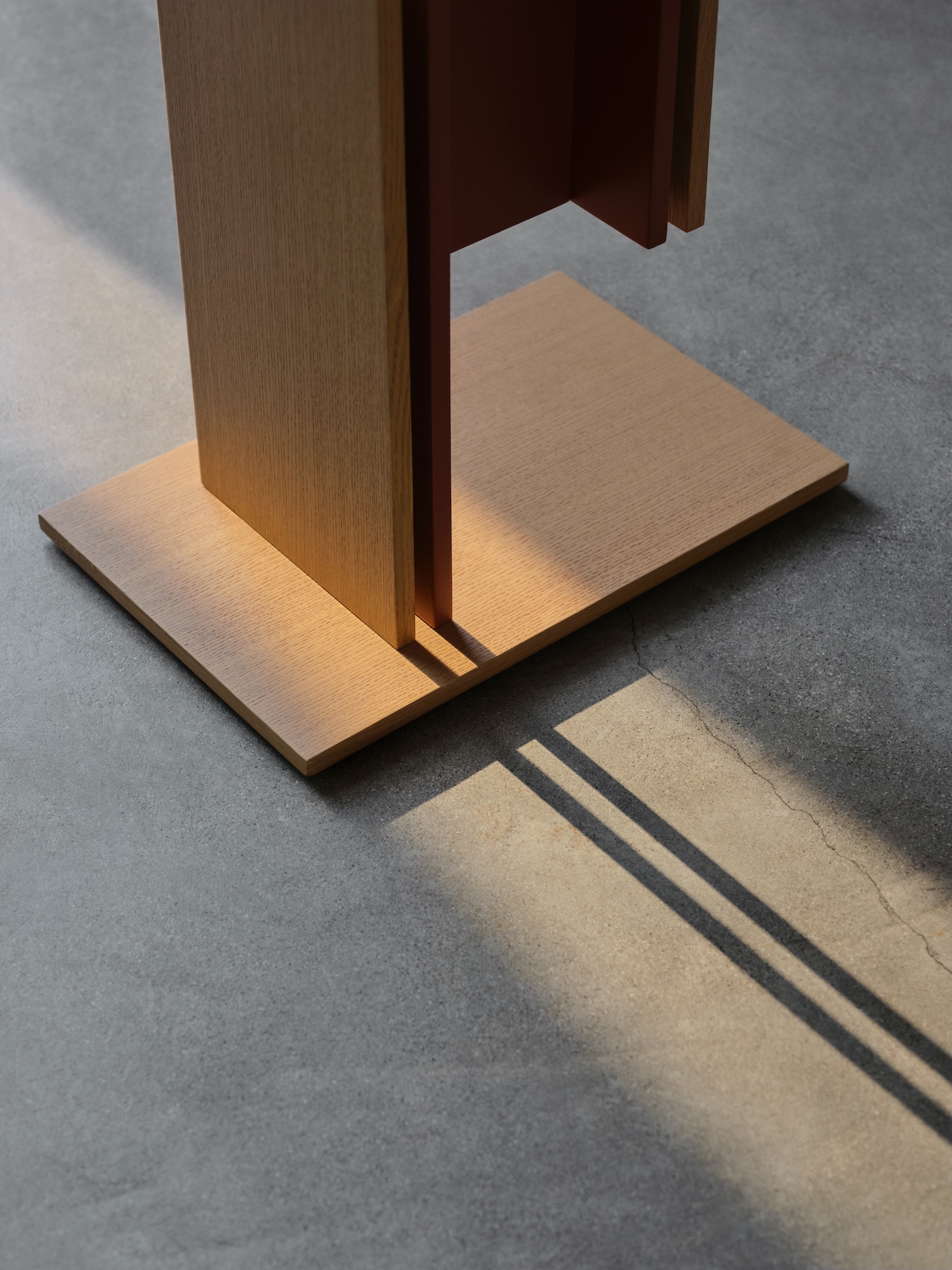SLVR is a minimal side table created by Los Angeles-based designer David Hwang. White oak forms the table’s primary structure, its grain running parallel to the dramatic cantilever. The material choice is no accident. “I wanted something with warmth that would contrast with the industrial inspiration,” the designer notes. “The oak brings an organic quality to a form that’s fundamentally architectural.” This tension between natural material and engineered form creates the piece’s distinctive character.
The SLVR’s silhouette clearly references the I-beam – that quintessential structural element that defined mid-century modernism throughout Los Angeles. But where industrial I-beams exist purely for strength, this side table transforms the utilitarian into something poetic. The asymmetrical cantilever appears to defy gravity, creating a sense of lightness that belies the oak’s substantial weight.
What distinguishes this piece from simple mimicry of architectural forms is its thoughtful color treatment. A carefully applied accent color interrupts the wood’s natural palette, creating a visual break that emphasizes the joint between components. This detail reveals a sophisticated understanding of how mid-century designers like Charles and Ray Eames used color not merely as decoration but as a structural element that clarifies form.
The connection between components showcases precision craftsmanship. Where two finishes meet, there’s no visible mechanical fastening – the joint appears seamless while simultaneously being highlighted by the color transition. This technical achievement transforms a necessary structural connection into a design feature, reminiscent of how architects like Richard Neutra celebrated rather than concealed the junctions in their buildings.







